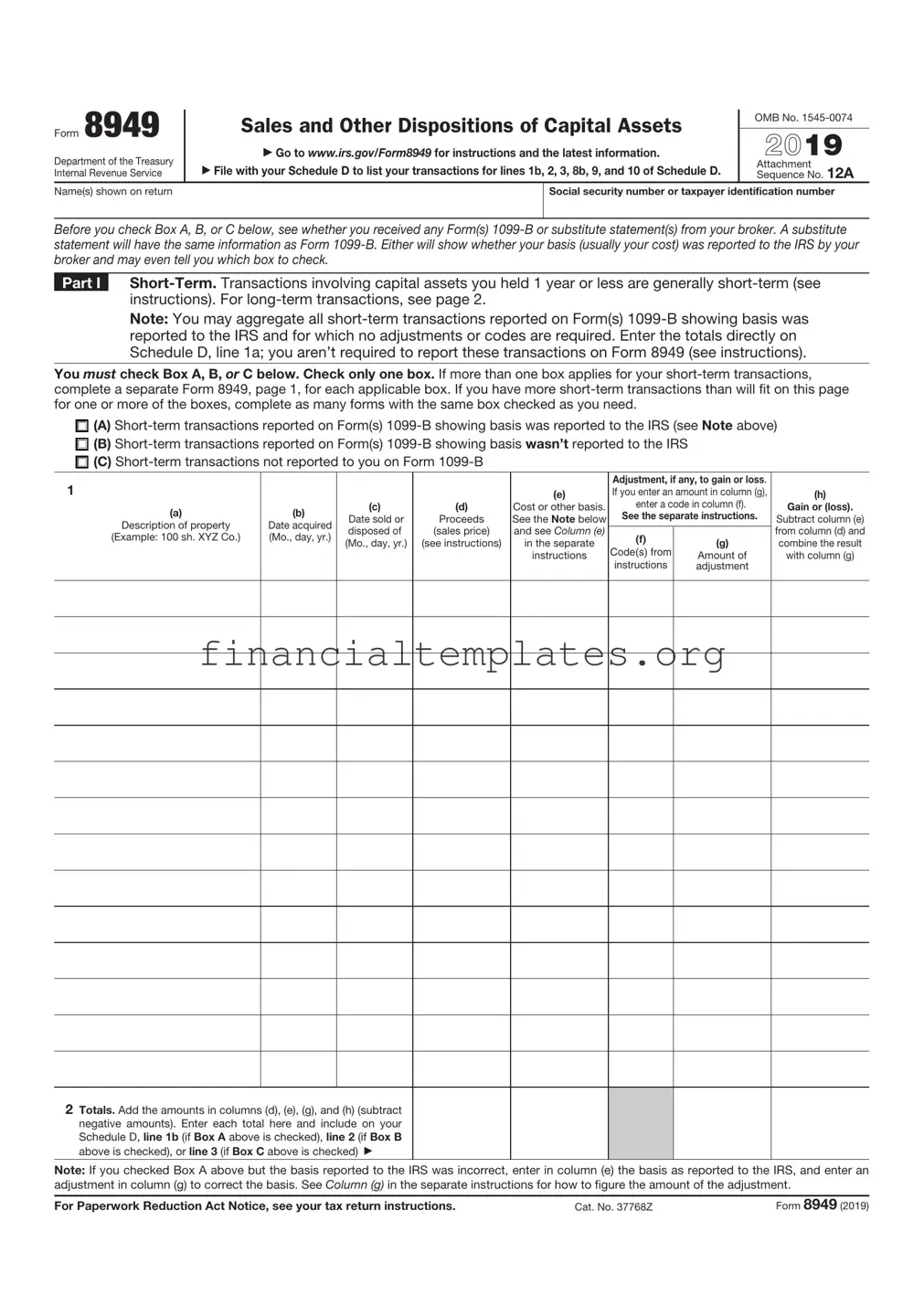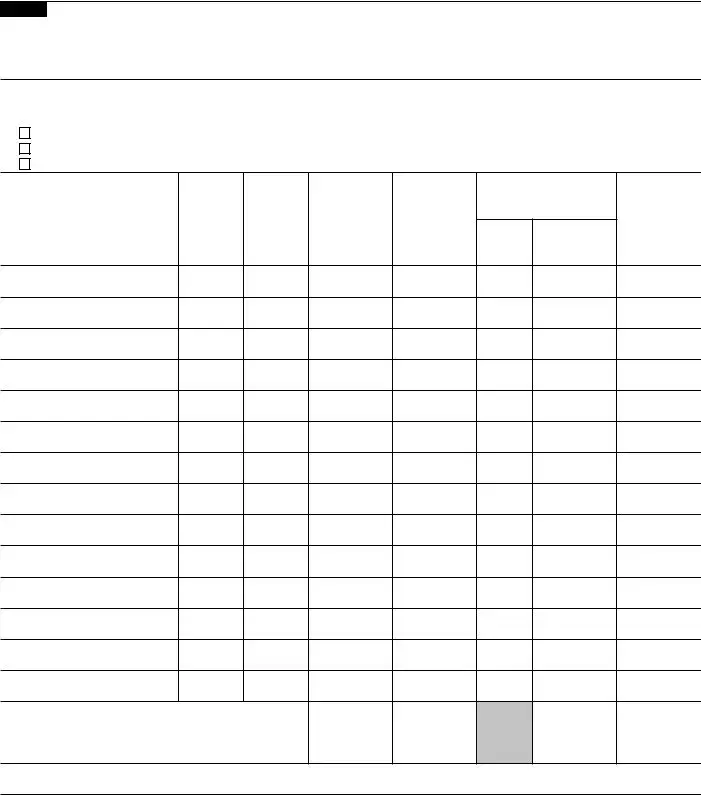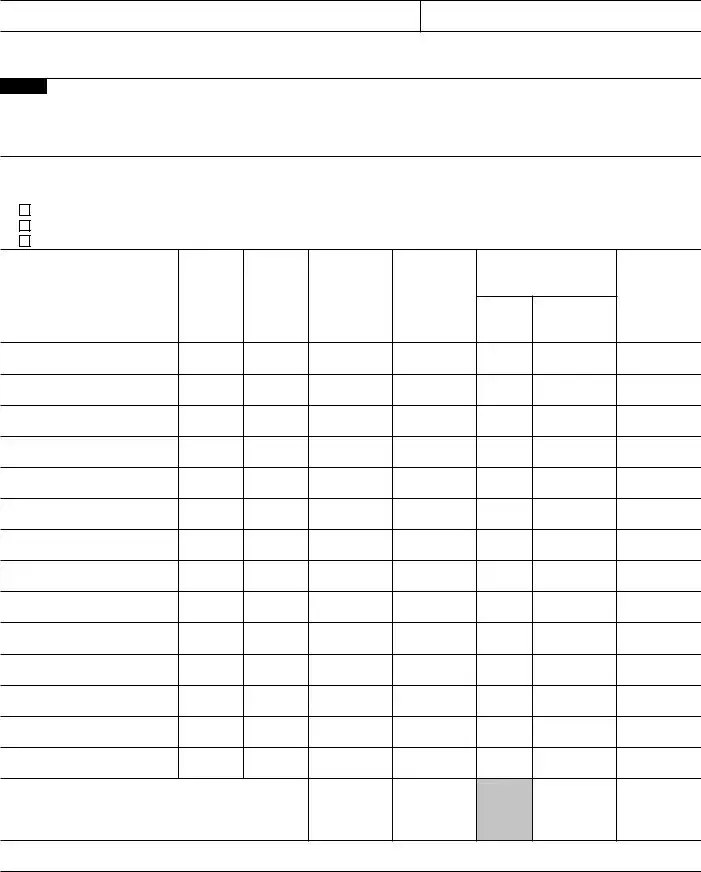The IRS 8949 form, pivotal for reporting sales and other dispositions of capital assets, resonates with several other tax documents through its purpose and structure. One such document is the Schedule D (Form 1040), which directly interacts with Form 8949. The Schedule D is utilized to summarize capital gains and losses from transactions reported on Form 8949, presenting a streamlined way to calculate the tax impact of these gains or losses. Both forms work in tandem to ensure individuals accurately report their investment activity during the fiscal year.
Similarly, Form 1099-B, often issued by brokers or mutual fund companies, shares characteristics with Form 8949. Form 1099-B provides details of sales and other transactions to both the taxpayer and the IRS, including information necessary to complete Form 8949, such as dates of transactions and the amounts. It's a primary document that taxpayers use as a reference when filling out the 8949, ensuring that all pertinent details of their capital transactions are accurately captured and reported.
Another document, Form 4797, used for reporting the sale or exchange of business property, also shares a conceptual kinship with Form 8949. Though Form 4797 is specifically for business assets, unlike the more general application of Form 8949, both require detailed reporting of transactions, including sales dates, amounts, and gain or loss calculations. This detailed reporting is crucial for assessing tax obligations related to asset disposition.
Form 6252, which is employed for reporting income from installment sales, parallels the IRS 8949 in its need for transactional detail and its role in recognizing revenue from sales over time. While Form 6252 is tailored toward the specific financing arrangement of installment sales, both forms are integral to determining the timing and magnitude of income recognition for tax purposes.
The Schedule E (Form 1040) is another document sharing similarities with Form 8949, especially in the realm of reporting income from rental properties, royalties, partnerships, S corporations, trusts, and estates. Although Schedule E focuses on passive income and loss, as opposed to the capital gains and losses of Form 8949, both forms contribute to a comprehensive view of an individual's tax situation through detailed income reporting.
Form 8824, concerning Like-Kind Exchanges, also bears resemblance to Form 8949 in its emphasis on the specifics of exchanges involving business or investment properties. Though Form 8824 deals with deferring tax on exchanges that qualify under specific criteria, it requires detailed record-keeping and reporting of these transactions, akin to the level of detail demanded by Form 8949 for capital asset transactions.
The Schedule B (Form 1040) is pertinent to the discussion for its role in reporting interest and ordinary dividends. While Schedule B focuses on a different type of income than Form 8949, the precision in reporting and the necessity to disclose detailed information about income sources are parallel themes in both documents, illustrating their importance in the accurate completion of tax returns.
Form 1040, U.S. Individual Income Tax Return itself, while being the umbrella document under which many of the forms, including Form 8949, are filed, shares a connection through its comprehensive nature. It's the summative document that requires integration of information from various sources, including capital gains and losses reported on Form 8949, underscoring the interrelatedness of these forms in the broader tax reporting ecosystem.
Last, but certainly not least, Form 8938, Statement of Specified Foreign Financial Assets, also parallels Form 8949 in its requirement for detailed reporting. Though geared towards reporting of foreign assets, Form 8938's emphasis on thorough disclosure resonates with the meticulous nature of reporting demanded by Form 8949, underlining the importance of precision in tax documentation.
In conclusion, although the IRS 8949 form serves a unique purpose in the landscape of tax reporting, it shares common ground with a variety of other tax documents. These connections underscore the complexity and interconnectedness of tax reporting, highlighting the importance of accuracy and detail across all forms of income and asset reporting.














